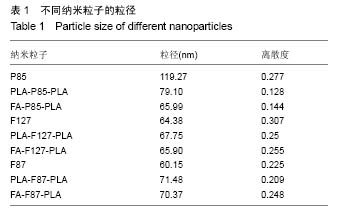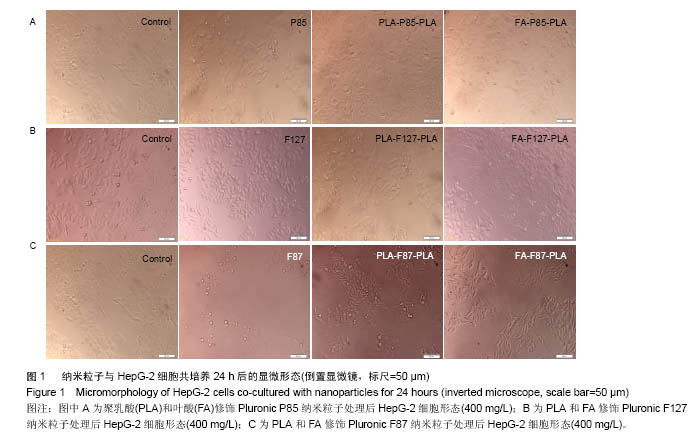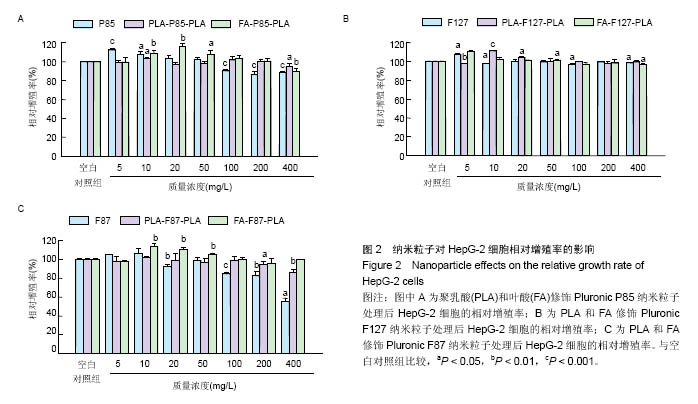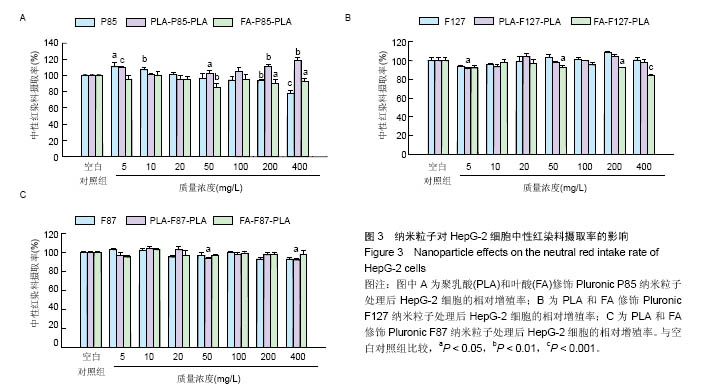| [1]Fahmy TM, Fong PM, Goyal A, et al. Targeted for drug delievey. Materials Today. 2005; 8(8): 18-26.[2]Sun Y, Yu B, Wang G, et al. Enhanced antitumor efficacy of vitamin E TPGS-emulsified PLGA nanoparticles for delivery of paclitaxel. Colloids Surf B Biointerfaces. 2014;123:716-723.[3]Zhong Y, Zhang J, Cheng R, et al. Reversibly crosslinked hyaluronic acid nanoparticles for active targeting and intelligent delivery of doxorubicin to drug resistant CD44+ human breast tumor xenografts. J Control Release. 2015; 205:144-154.[4]Oberdörster G, Ferin J, Gelein R, et al. Role of the alveolar macrophage in lung injury: studies with ultrafine particles. Environ Health Perspect. 1992;97:193-199.[5]Srivastav AK, Kumar M, Ansari NG, et al. A comprehensive toxicity study of zinc oxide nanoparticles versus their bulk in Wistar rats: Toxicity study of zinc oxide nanoparticles. Hum Exp Toxicol. 2016;35(12):1286-1304.[6]Curtis J, Greenberg M, Kester J, et al. Nanotechnology and nanotoxicology: a primer for clinicians. Toxicol Rev. 2006; 25(4): 245-260.[7]Hanot-Roy M, Tubeuf E, Guilbert A, et al. Oxidative stress pathways involved in cytotoxicity and genotoxicity of titanium dioxide (TiO2) nanoparticles on cells constitutive of alveolo-capillary barrier in vitro. Toxicol In Vitro. 2016;33: 125-135.[8]Alexandridis P, Hatton TA. Poly(ethylene oxide)-poly(propylene oxide)-poly(ethylene oxide) block copolymer surfactants in aqueous solutions and at interfaces: thermodynamics, structure, dynamics, and modeling. Colloids and Surfaces A: Physicochemical and Engineering Aspects. 1995; 96(1–2): 1-46.[9]Alakhov VYu, Moskaleva EYu, Batrakova EV, et al. Hypersensitization of multidrug resistant human ovarian carcinoma cells by pluronic P85 block copolymer. Bioconjug Chem. 1996;7(2):209-216.[10]Xia W, Low PS. Folate-targeted therapies for cancer. J Med Chem. 2010;53(19):6811-6824.[11]Hilgenbrink AR, Low PS. Folate receptor-mediated drug targeting: from therapeutics to diagnostics .J Pharm Sci. 2005;94(10):2135-2146.[12]Xiong XY, Qin X, Li ZL, et al. Synthesis, drug release and targeting behaviors of Novel Folated Pluronic F87/poly(lactic acid) block copolymer. European Polymer Journal. 2015; 68:233-242.[13]秦翔.新型含叶酸靶向Pluronic/PLA高分子药物制剂的研究[D]. 南昌:江西科技师范大学,2015.[14]Xiong XY, Li QH, Li YP, et al. Pluronic P85/poly(lactic acid) vesicles as novel carrier for oral insulin delivery. Colloids Surf B Biointerfaces. 2013;111:282-288.[15]李资玲,熊向源,龚妍春,等.包埋紫杉醇的Pluronic P85 /聚乳酸纳米粒子制备及体外释放行为考察[J].中国实验方剂学杂志, 2014,20(1):1-4.[16]Kabanov AV, Batrakova EV, Alakhov VY. Pluronic block copolymers as novel polymer therapeutics for drug and gene delivery. J Control Release. 2002;82(2-3):189-212.[17]Mosmann T. Rapid colorimetric assay for cellular growth and survival: application to proliferation and cytotoxicity assays. J Immunol Methods. 1983;65(1-2):55-63.[18]孙利珍,李玉萍,邱维曌,等. 纳米级PLA-P85-PLA两亲性共聚物的细胞相容性研究[J]. 功能材料, 2013, 44(21): 3135-3142.[19]Gomes-Cornélio AL, Rodrigues EM, Mestieri LB, et al. Cytotoxicity and genotoxicity of calcium silicate-based cements on an osteoblast lineage. Braz Oral Res. 2016;30(1): e48.[20]Saberi EA, Karkehabadi H, Mollashahi NF. Cytotoxicity of Various Endodontic Materials on Stem Cells of Human Apical Papilla. Iran Endod J. 2016;11(1):17-22.[21]Ta?l? PN, Yalvaç ME, Sofiev N, et al. Effect of F68, F127, and P85 pluronic block copolymers on odontogenic differentiation of human tooth germ stem cells. J Endod. 2013;39(10): 1265-1271.[22]Borenfreund E, Puerner JA. Cytotoxicity of metals, metal-metal and metal-chelator combinations assayed in vitro. Toxicology. 1986;39(2):121-134.[23]Babich H, Sinensky MC. Indirect cytotoxicity of dental materials: a study with Transwell inserts and the neutral red uptake assay. Altern Lab Anim. 2001;29(1):9-13.[24]Risbud MV, Hambir S, Jog J, et al. Biocompatibility assessment of polytetrafluoroethylene/wollastonite composites using endothelial cells and macrophages. J Biomater Sci Polym Ed. 2001;12(11):1177-1189.[25]Ivask A, Titma T, Visnapuu M, et al. Toxicity of 11 Metal Oxide Nanoparticles to Three Mammalian Cell Types In Vitro. Curr Top Med Chem. 2015;15(18):1914-1929.[26]Weyermann J, Lochmann D, Zimmer A. A practical note on the use of cytotoxicity assays. Int J Pharm. 2005;288(2): 369-376. |
.jpg)





.jpg)